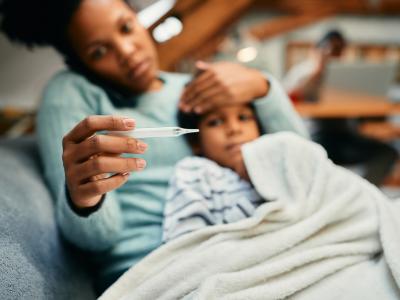UK expands monkeypox vaccination to more risk groups
The United Kingdom today expanded monkeypox vaccination to include men who have sex with men who are in high-risk groups, instead of just those who are known contacts and those at occupational risk.
In an update, the UK's Health Security Agency (HSA) said the risk criteria now includes people who have recently had multiple sex partners, participate in group sex, attend sex-on-premises venues, and have a proxy marker such as a recent bacterial sexually transmitted infection in the past year.
In other developments, the UK reported 219 more cases over a 4-day period, according to the HSA's latest update. The new cases lift its total to 793 as of Jun 20. The highest proportion, 80%, involve London residents.
In the United States, New Jersey yesterday announced its first probable case, a patient who tested positive for orthopox on Jun 18 whose samples will undergo confirmatory monkeypox testing at the Centers for Disease Control and Prevention (CDC). The patient is isolating at home, and the New Jersey Department of Health (NJDOH) had no other details about the patient or exposure.
Jun 21 UK HSA vaccination update
Jun 21 UK HSA update
Jun 20 NJDOH statement
Study: Hospitalized Omicron patients benefited from fourth vaccine dose
When the Omicron variant surge hit at the end of 2021, which came with breakthrough COVID-19 infections in vaccinated people, Israel was one of the first countries to offer fourth vaccine doses for those age 60 and older. Yesterday, Israeli researchers reported that a fourth dose was linked to significant protection against severe outcomes in hospitalized patients.
In a multicenter retrospective cohort study, they examined outcomes in people who were hospitalized in the last half of January, looking for any differences in outcomes between those who received three and those who received four doses. Most people in Israel received the Pfizer-BioNTech vaccine. The team published its findings in Clinical Infectious Diseases.
They analyzed outcomes of 1,049 patients, defining poor outcomes as mechanical ventilation or death. Of the group, 394 were unvaccinated, 386 had received three doses, and 88 had gotten a fourth dose. The three-dose group, which had more men and immunocompromised people, had similar severe outcomes to the unvaccinated group, which were 49% and 51%, respectively.
Though people who received their fourth doses had similar age and immune compromise profiles, they had better outcomes than unvaccinated people (34% vs 51%).
"These findings suggest that administration of a fresh booster dose should be considered for at-risk individuals upon an impending new COVID-19 wave," the group wrote.
Jun 20 Clin Infect Dis abstract
US COVID markers show declines, but BA.4 and BA.5 levels rising
US COVID-19 activity appears to be decreasing or stabilizing, with the 7-day average for new cases now below 100,000. According to a Washington Post analysis, the 7-day average is at 94,437, down 11.9% from a week ago. However, it's difficult to get a more precise assessment, given reduced testing and the wider use of at-home tests.
Meanwhile, the proportions of BA.4 and BA.5 Omicron subvariants, which are more transmissible and have mutations linked to immune escape, are steadily rising. In its latest estimates, the CDC said today that BA.4 and BA.5 make up about 35% of sequenced SARS-CoV-2 samples, up from about 23% the week before. The south-central region has the highest proportion of two subvariants. That region includes Arkansas, Louisiana, New Mexico, Oklahoma, and Texas.
Hospitalizations appear stable, as are deaths, which average about 300 per day.
Late last week, the CDC said nearly 61% of the US population lives in areas with medium or high COVID-19 community levels, down from 67% the previous week.
Washington Post COVID-19 tracker
CDC variant estimates
CDC community transmission estimates











